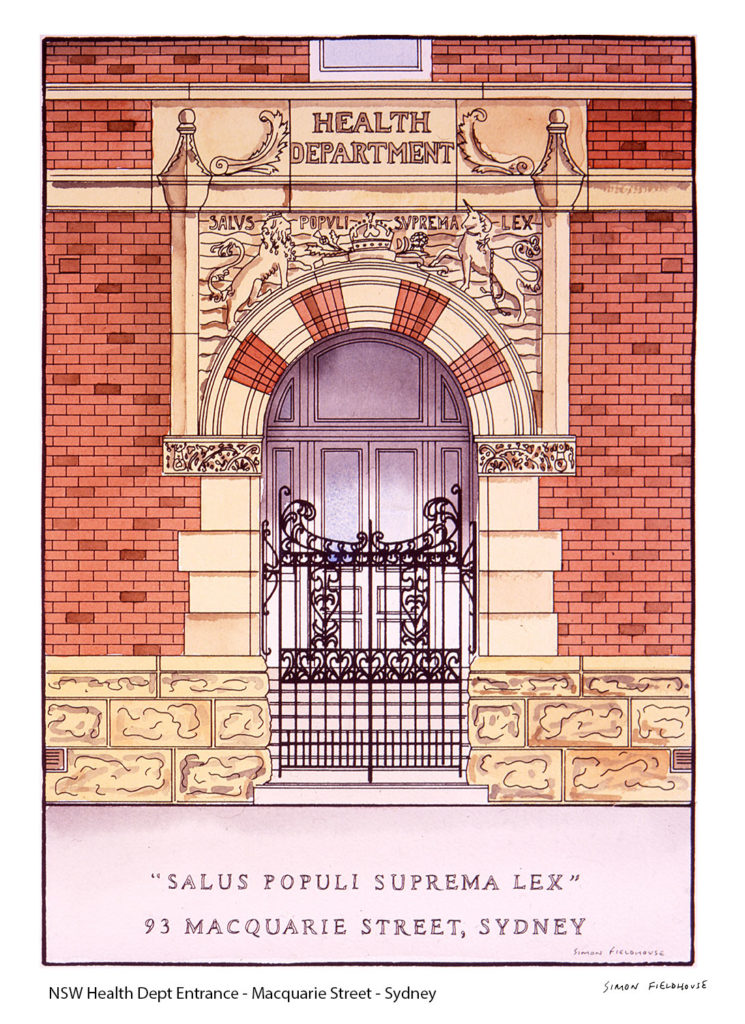
NSW Health Department Macquarie Street
Health Department Entrance - Macquarie Street - Sydney Is a wonderfully ornate design in stone and brick representative of a particular style predominate in Sydney from the 1880s to 1910.The building is now used as a five-star hotel and as long since ceased to be New South Wales health Department building Macquarie Street is the easternmost street of Sydney's central business district. Macquarie Street extends from Hyde Park at its southern end to the Sydney Opera House at its north. Description Macquarie Street is named after Lachlan Macquarie, an early Governor of New South Wales (1810–1821), and was designed as a ceremonial thoroughfare.[1] Macquarie initiated the construction of Sydney's first public buildings of any real permanence and set the boundaries of Sydney's grid of streets. It became the colony's preeminent residential address. Hengrove Hall Macquarie Street is the location of Sydney Hospital, the Hyde Park Barracks and St. James Church, which were all Macquarie projects. Macquarie Street was widely known as the Harley Street of Sydney from the late 19th century until recent decades. The Royal Australian College of Physicians Building[2] at 145 Macquarie Street was the Georgian residence of John Fairfax until 1848. The British Medical Association's 1920s BMA Houseat 135-137 Macquarie St still houses medical chambers and lecture hall. Today, Macquarie Street is also the location of Parliament House, the State Library of New South Wales, Sydney Mint and the Reserve Bank of Australia. Part of the street is adjacent to the Royal Botanic Gardens, which is the location of Government House and the Sydney Conservatorium of Music. At the northern end of Macquarie Street is a group of buildings including an apartment block known as "The Toaster Building". "Arguably the most universally disliked development in decades", it also includes offices, restaurants, a hotel and cinema. Between 61 Macquarie Street the heritage sandstone Moore Stairs (1868) lead down to East Circular.The New South Wales Health Department the ministers most of the hospitals both public and private in the state and has done so for over 100 years.